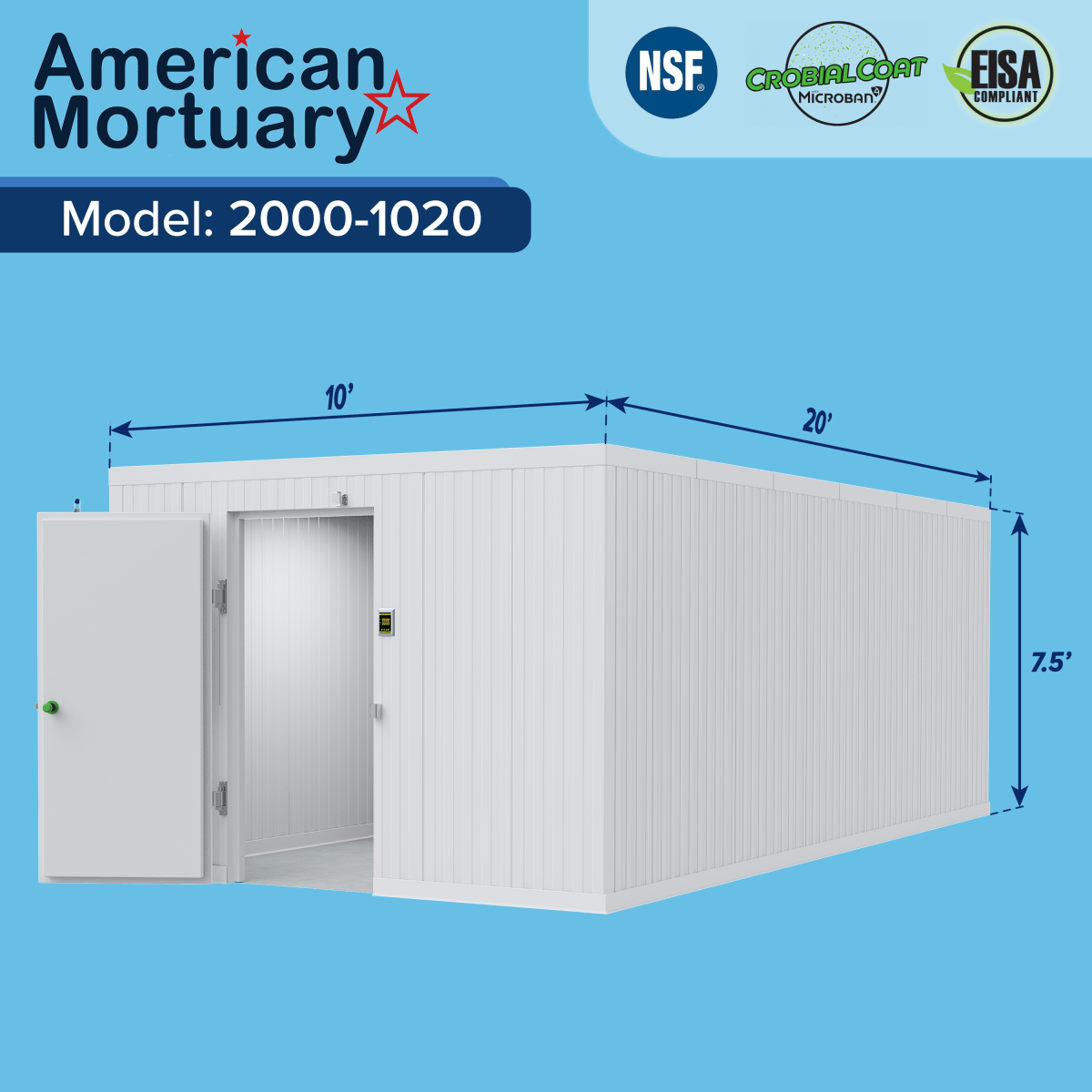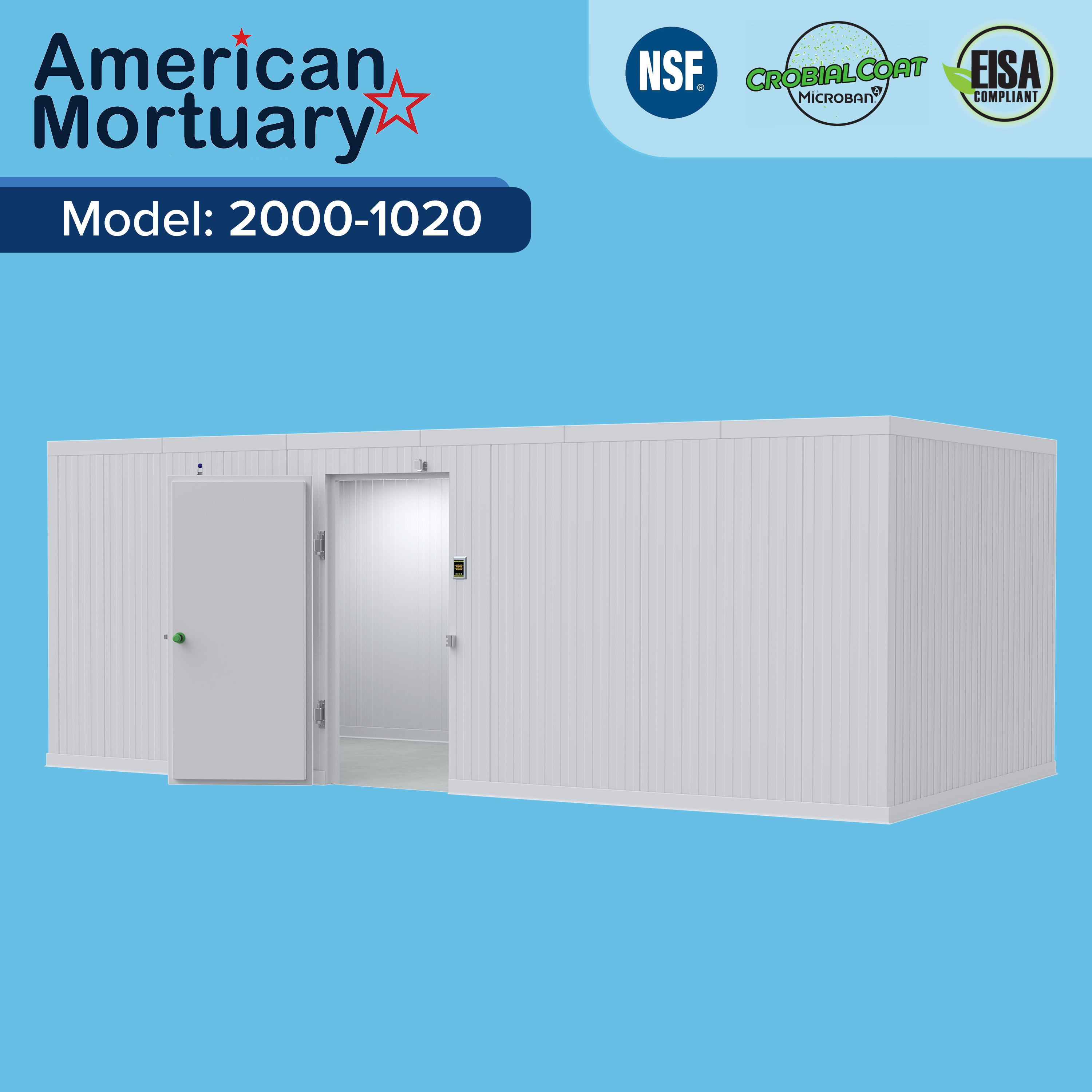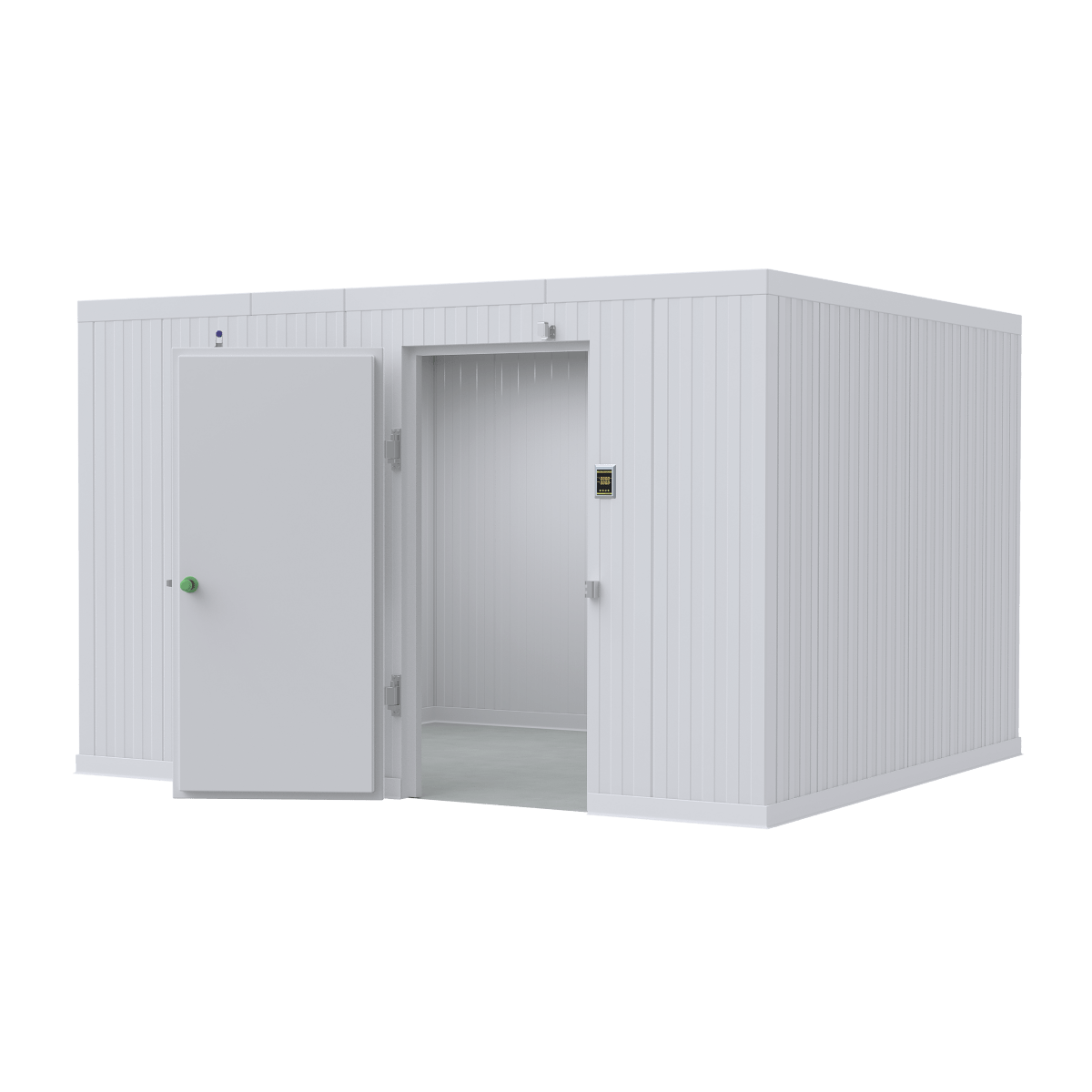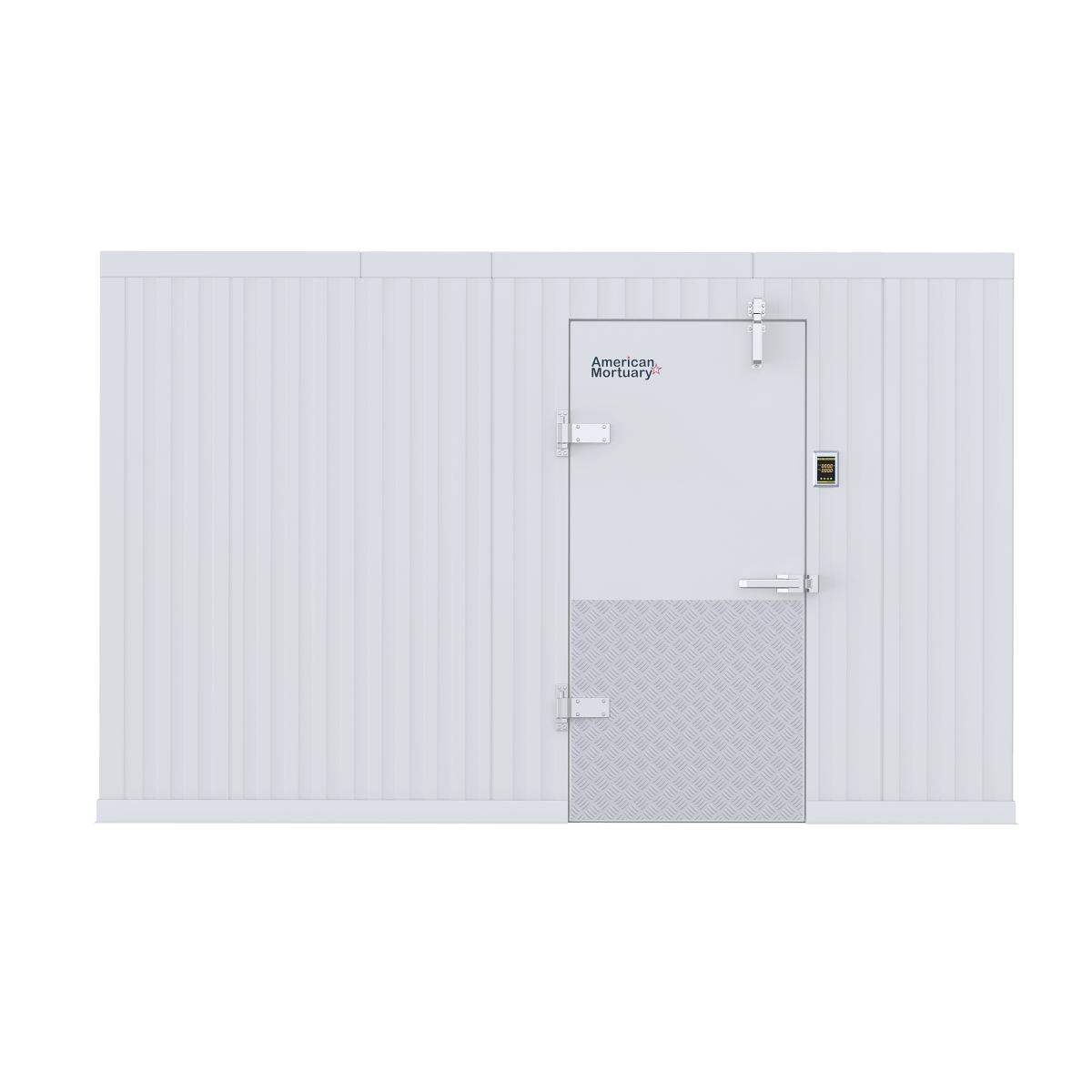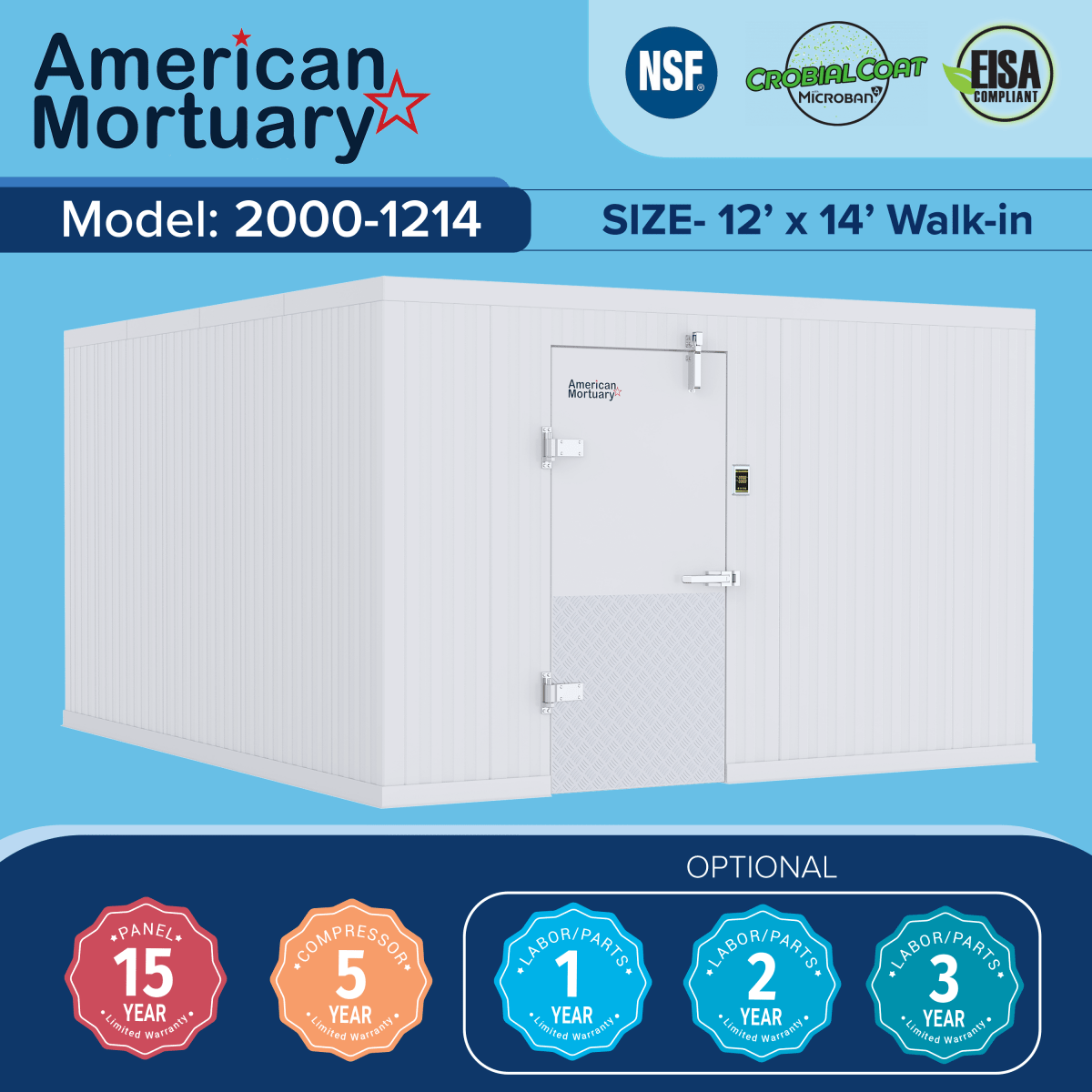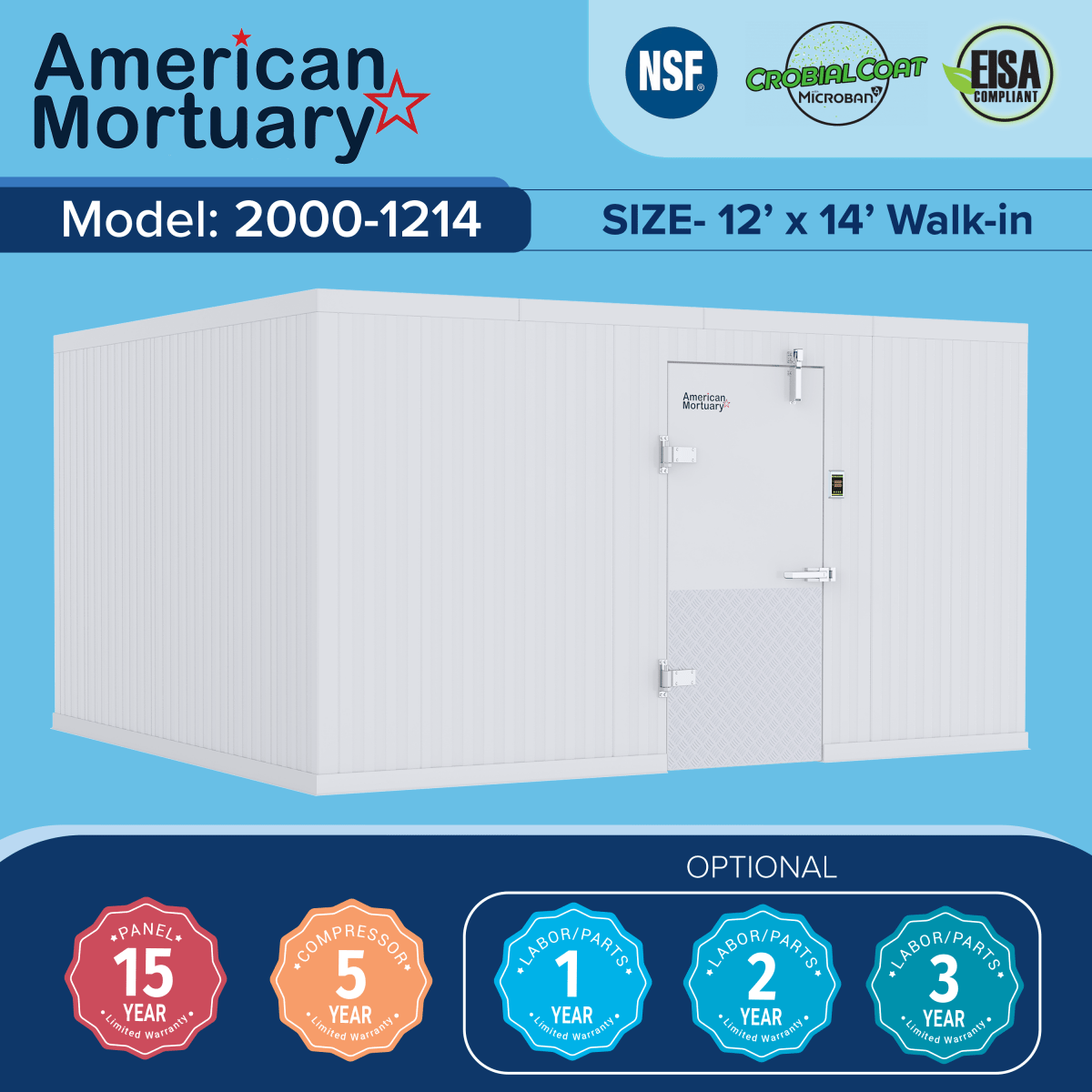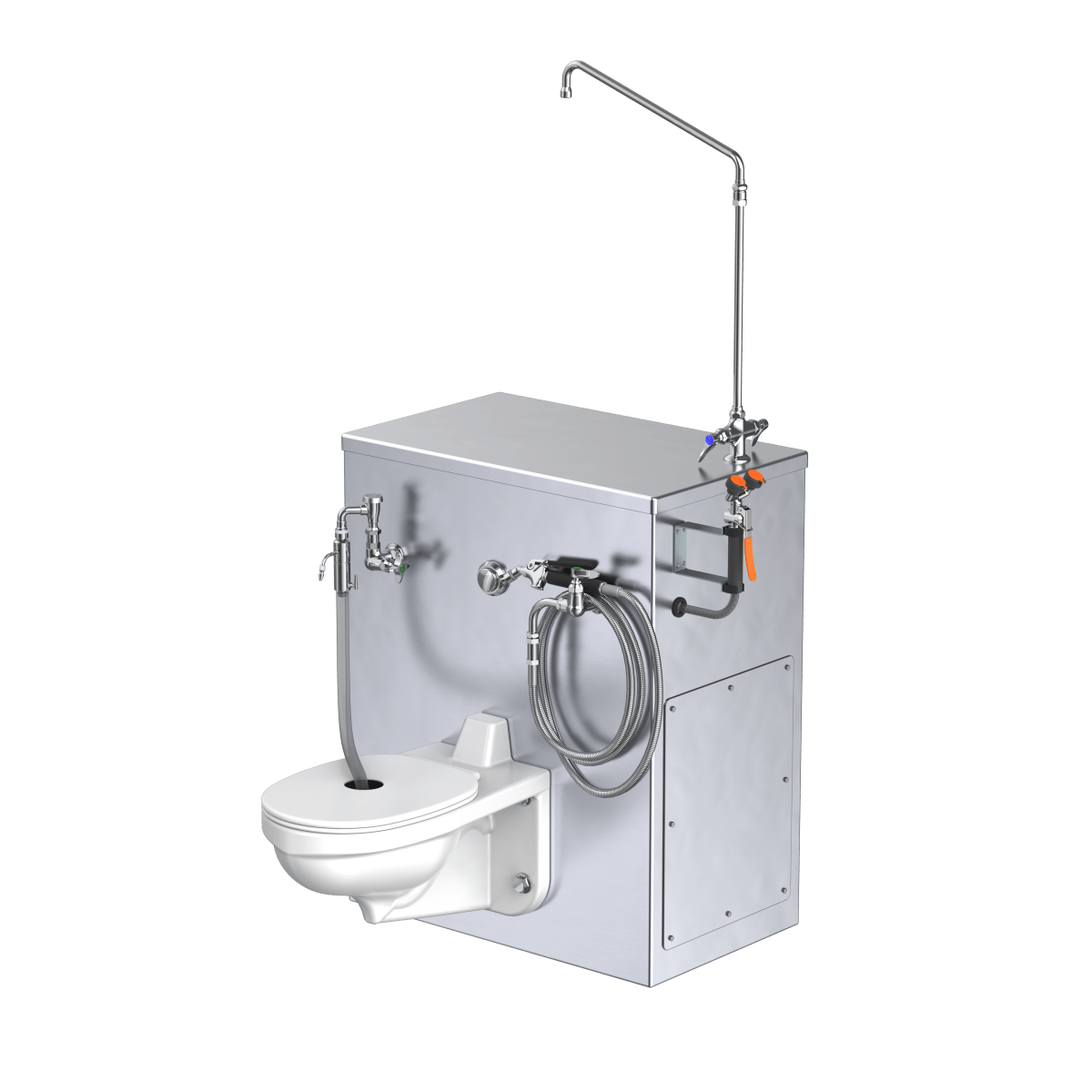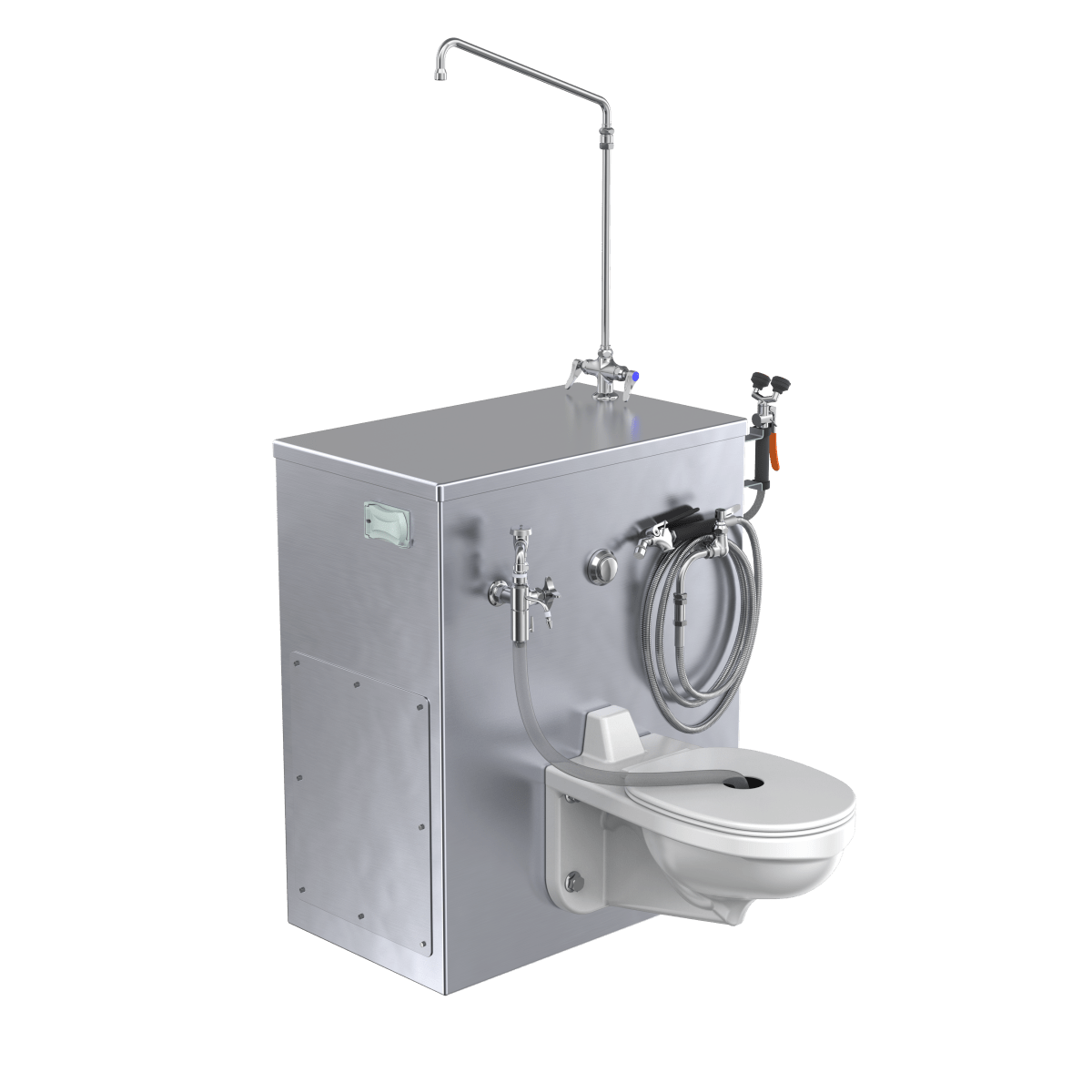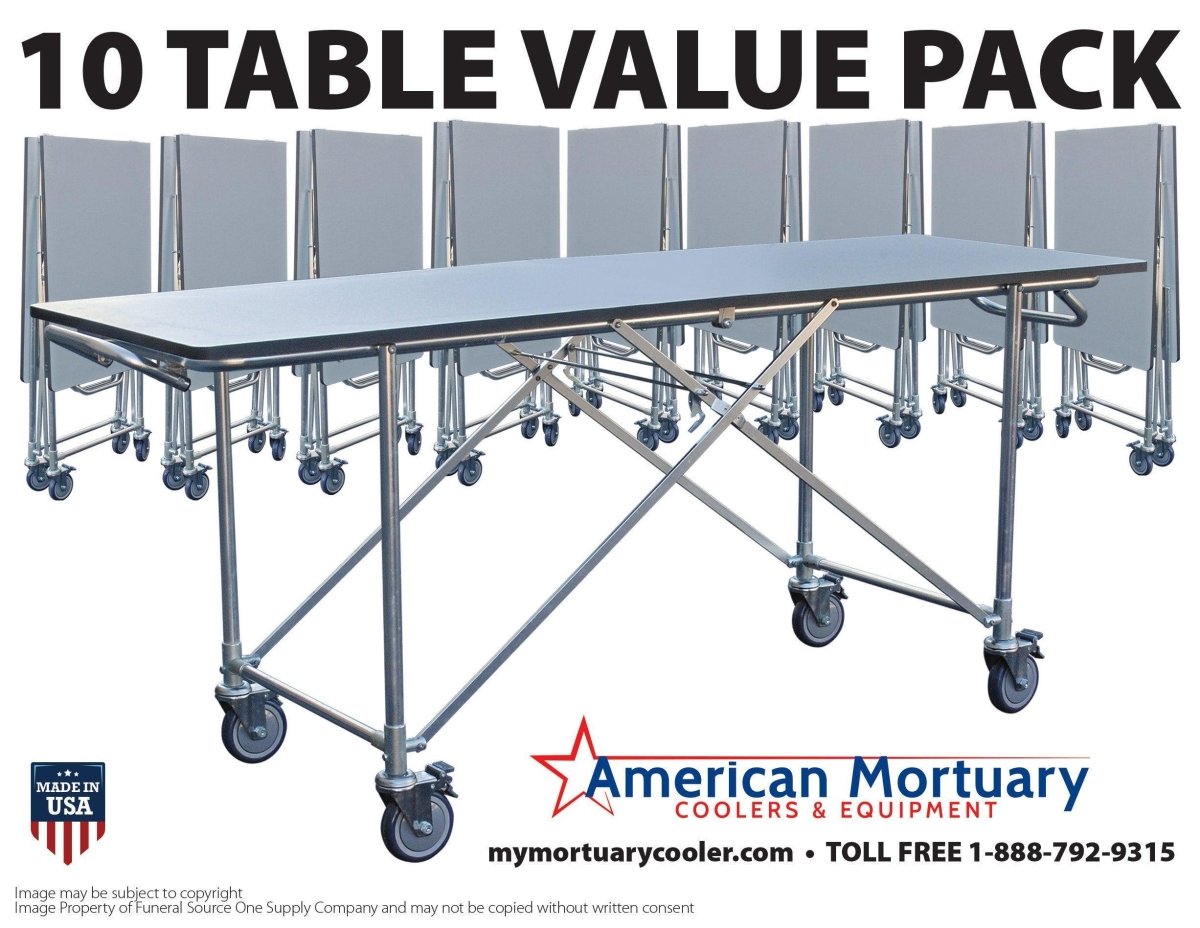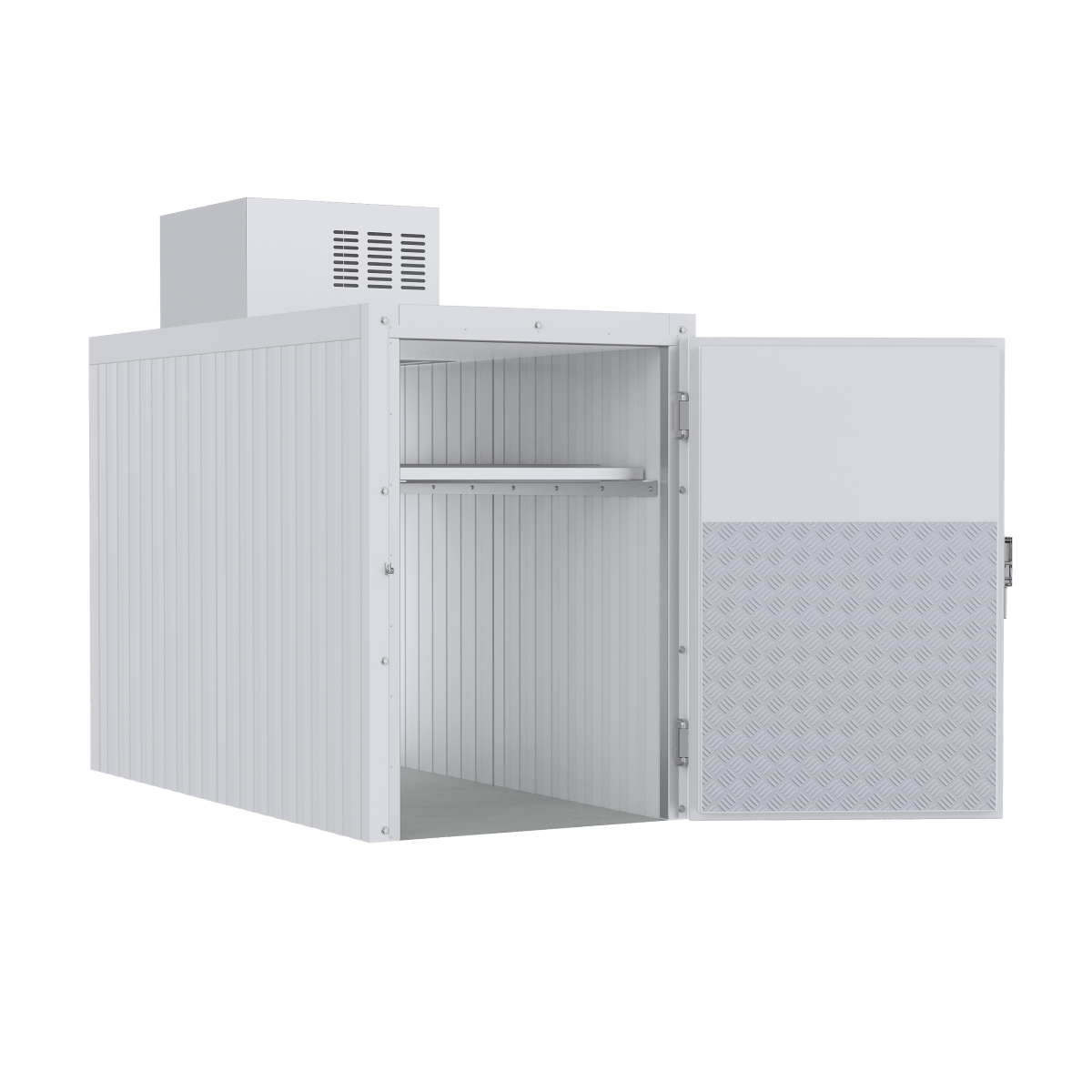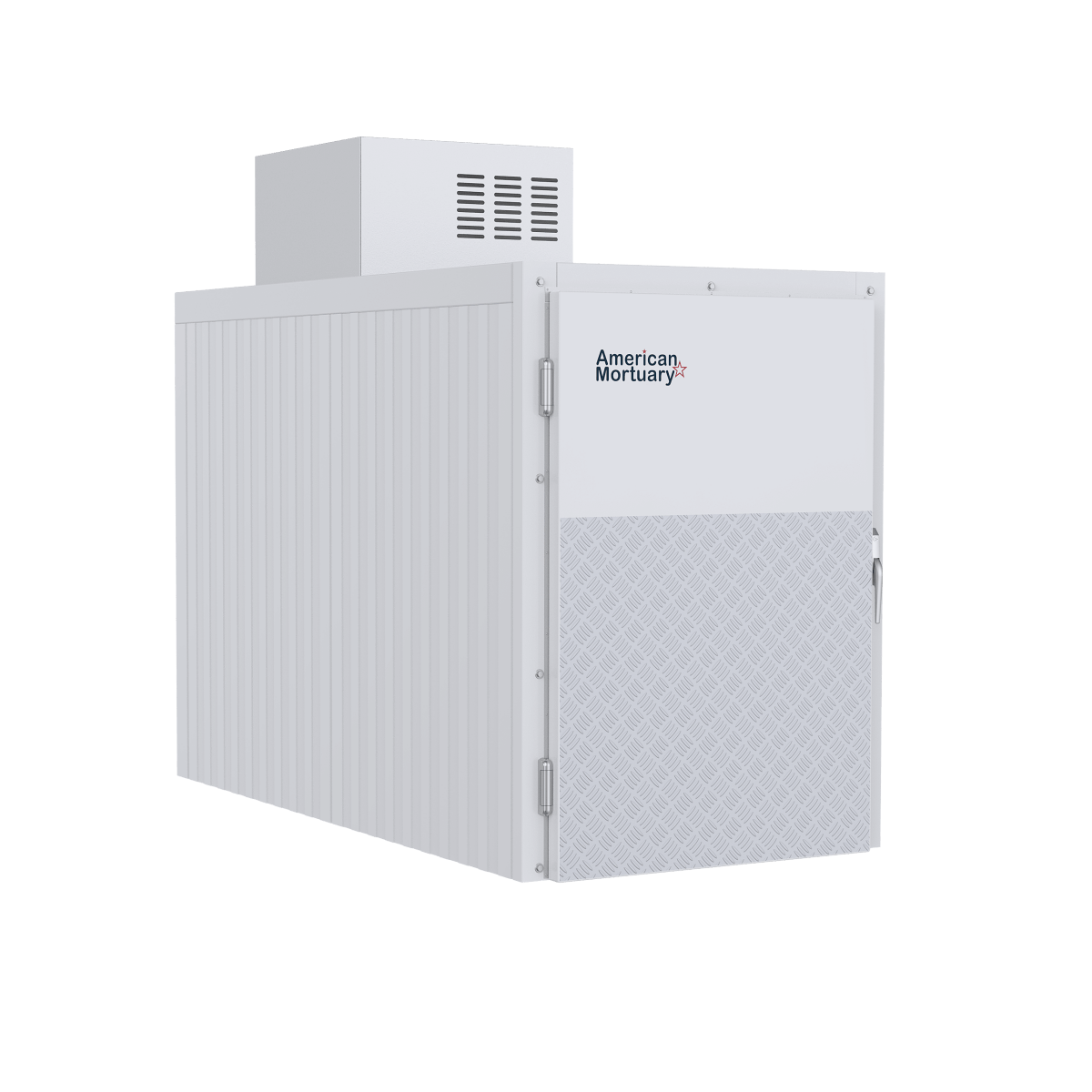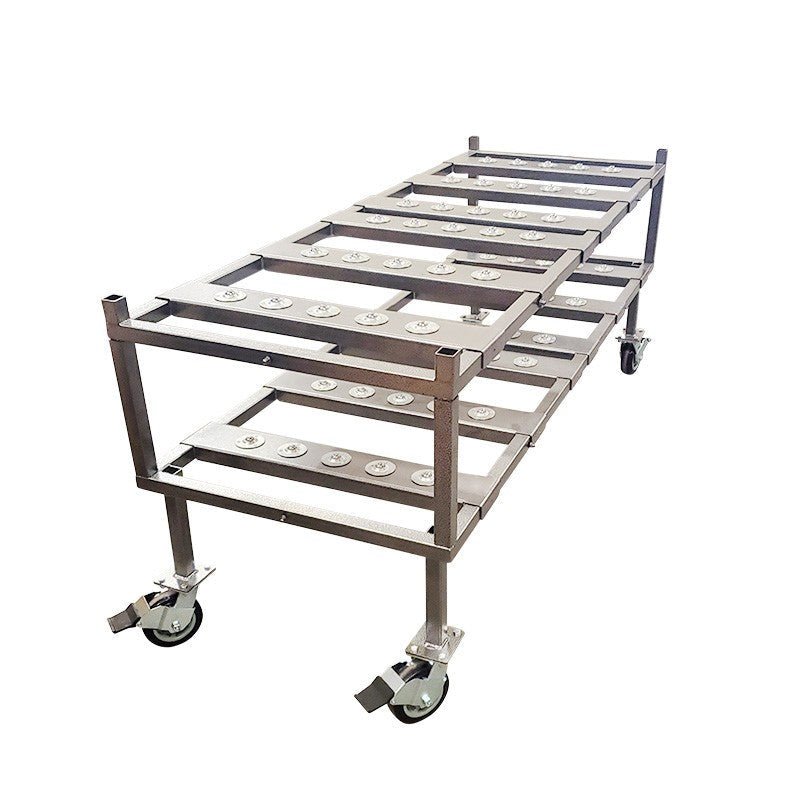The Evolution and Legacy of Duotronic Embalming Machines
The duotronic embalming machine is a specialized fluid injection system used by funeral professionals to introduce preservative chemicals into a deceased person's circulatory system. First developed in 1967, this equipment has become a cornerstone in modern embalming practices.
| Duotronic Embalming Machine: Key Facts |
|---|
| Primary Function: Controlled injection of embalming fluids into arterial system |
| First Introduced: 1967 (Duotronic I) |
| Current Model: Duotronic V (introduced after 2013) |
| Price Range: $4,959-$5,400 |
| Tank Capacity: 3 gallons (Pyrex glass) |
| Construction: Stainless steel case, chemical-resistant components |
| Notable Feature: Pulsation system to simulate heartbeat (on select models) |
Perhaps it wasn't a cultural seismic shift, but in embalming, the Duotronic machine represented quite an improvement over what had been used previously. Prior to its introduction, embalmers relied primarily on gravity-flow systems with liftd reservoirs, lacking the precision and control that the Duotronic's electronic regulation would bring to the profession.
The name "Duotronic" itself reveals its innovative design, combining its two-speed ("duo") electronic ("tronic") control system. This represented a significant advancement in embalming technology, allowing funeral professionals to achieve more consistent and higher-quality preservation results.
I'm Mortuary Cooler, a national-level supplier of mortuary coolers and funeral equipment including the duotronic embalming machine. My years of experience providing equipment solutions to funeral homes has given me extensive knowledge of how these machines perform in real-world preparation rooms.

Quick duotronic embalming machine definitions:
Understanding the Duotronic Embalming Machine
When funeral professionals talk about reliable preparation room equipment, the duotronic embalming machine often leads the conversation. Having worked with countless funeral homes across the country, I've seen how this remarkable piece of technology serves as the beating heart of modern embalming.
At its essence, the Duotronic does one thing exceptionally well: it introduces embalming fluids into the deceased's arterial system with precision that simply wasn't possible before its invention. This controlled delivery—at just the right pressure and flow rate—allows embalmers to achieve consistent, natural-looking results regardless of the unique challenges each case presents.
The magic happens through a thoughtfully engineered system where every component plays a vital role. The machine combines a robust motor (ranging from a nimble 1/8 HP to a more powerful 1/2 HP depending on the model) with either a belt-driven, magnetic drive, or positive displacement pump system. All this technology surrounds a crystal-clear 3-gallon Pyrex glass tank that lets you monitor fluid levels at a glance.
What I've always appreciated about the duotronic embalming machine is its built-in safeguards. The spring-loaded regulating valve automatically redirects excess fluid back into the tank if resistance gets too high—preventing tissue damage and fluid leakage that could otherwise occur. It's this kind of thoughtful engineering that has made the Duotronic a trusted companion in preparation rooms for over five decades.
As Ron Poole, a technician with 44 years of experience with these machines, once told me, "The Duotronic revolutionized embalming by giving practitioners precise control over fluid delivery. Before this technology, embalmers had to rely on gravity and their own judgment, which could lead to inconsistent results."
More info about the embalming process
Primary Function & Core Components
The duotronic embalming machine shines in its primary role: delivering preservation fluids with the kind of control that transforms embalming from an art to a science.
The heart of the system is its precise fluid injection capability. Unlike older gravity-fed systems, the Duotronic maintains steady pressure throughout the entire process, allowing embalmers to make real-time adjustments based on the specific needs of each case—whether dealing with edema, jaundice, or other challenging conditions.
Supporting the arterial circulation is another area where the Duotronic truly excels. By maintaining consistent pressure, the machine ensures that embalming fluids reach even the most distant capillary beds, resulting in more thorough preservation and a more natural appearance.
Many embalmers I've spoken with particularly value the pulse simulation feature (introduced with the Duotronic II). This ingenious system mimics the rhythm of a natural heartbeat, helping to clear minor vascular obstructions and distribute fluids more evenly throughout the body's tissues.
Rounding out the core components are the electronic gauges that provide instant feedback on pressure levels. This immediate information allows for quick adjustments during the embalming process—something that's particularly valuable when working with challenging cases.
Materials & Construction Quality
In my years supplying funeral equipment, I've been consistently impressed by how many decades-old duotronic embalming machines remain in active service. This extraordinary longevity isn't accidental—it's the direct result of thoughtful material selection and quality construction.
The stainless steel chassis forms a protective shell that stands up to daily exposure to harsh chemicals while maintaining its professional appearance year after year. This material choice reflects the practical realities of the preparation room, where spills and splashes are inevitable despite best practices.
The Pyrex glass tank is another inspired design choice. This laboratory-grade glass provides crystal-clear visibility of fluid levels while resisting staining and chemical damage. Many embalmers appreciate being able to see exactly what's happening with their fluid mixture at all times.
Throughout the machine, Teflon-coated components prevent chemical degradation in valves and gaskets—areas that would otherwise be vulnerable to breakdown. This attention to detail extends to the easy-clean surfaces with their smooth contours and minimal crevices where residue might otherwise accumulate.
Perhaps most importantly, every component that contacts embalming chemicals has been specifically selected for its chemical resistance. From powerful phenols to high-index cavity fluids, the Duotronic handles it all without degradation.
This combination of quality materials explains why so many funeral professionals develop such loyalty to their duotronic embalming machine. I've met numerous embalmers who would rather repair their trusted 30-year-old unit than replace it with something new—a testament to the exceptional durability built into every model.
50+ Years of Evolution: From Duotronic I to Duotronic V
The story of the duotronic embalming machine begins in 1967, during a time when America was experiencing both cultural revolution and technological innovation. While the Summer of Love and Beatles' Sgt. Pepper were capturing headlines, a quieter but equally important revolution was unfolding in funeral homes across the country.

The original Duotronic I emerged from Edwards Equipment, a company cleverly named after the wife's maiden name of one of the founders. Recognizing that gravity-flow systems simply couldn't provide the precision modern embalming demanded, they set out to create something better. The very first unit rolled off the line bearing serial number A-100 – a deliberate choice to commemorate 1967, the year everything changed for embalmers.
Over the decades, the duotronic embalming machine changed hands several times, passing from Edwards to Royal Bond, then to Amedco, followed by a long stint with Pierce Chemical, before finally landing with current owner Wilbert Funeral Services in 2012. What's remarkable is how the core commitment to quality survived each transition.
"I was trained by World War II veterans with a 'just do it right' mindset," shared Ron Poole, who worked with the machines for over 44 years. "That attitude permeated everything we did." This post-war engineering ethos explains why so many original Duotronics are still functioning today, over half a century later.
For those interested in the technical foundations, the historical patent on embalming apparatus shows just how innovative these machines were for their time.
Timeline of Key Releases
The duotronic embalming machine family tree spans five generations, each bringing meaningful improvements while honoring what worked before:
The Duotronic I (1967) introduced the funeral industry to electronically controlled embalming. With its belt-driven centrifugal pump generating up to 30 psi, sturdy stainless steel case, and crystal-clear Pyrex tank, it immediately set a new standard that competitors scrambled to match.
A decade later, the Duotronic II (1977) arrived with a game-changing innovation: pulsation technology. By mimicking the natural rhythm of a heartbeat, this feature helped clear arterial blockages and distributed embalming fluid more evenly throughout the body. The two-speed motor gave embalmers greater control while maintaining the reliable 30 psi maximum pressure.
The Duotronic III (1983) represented a significant engineering leap forward with its magnetic drive pump. By eliminating seals that could wear out from harsh chemical exposure, this model dramatically reduced maintenance needs. Operating at a gentler 15 psi maximum, it quickly became the preferred choice for embalmers who valued tissue preservation over speed.
Twenty years later, the Duotronic IV (2003) responded to market demands with a powerful positive displacement pump capable of reaching 100 psi. This model served the industry for about a decade before being discontinued when its successor arrived.
Today's Duotronic V (2013) combines the best features of its ancestors with modern safety improvements. Offering a versatile pressure range from 0-100 psi powered by a reliable 1/4 HP motor, it also includes an automatic shut-off feature that prevents accidents and fluid waste.
What's particularly noteworthy is how each new generation maintained compatibility with existing accessories. This thoughtful backward compatibility has earned the loyalty of funeral professionals who appreciate not having to replace their entire setup with each upgrade.
Key People & Companies Behind Duotronic
The duotronic embalming machine didn't just appear out of nowhere – it took visionary people to bring it to life and keep it evolving:
Argo Landau and Jack Laufer, the founders of Edwards Equipment, were the first to recognize that embalmers deserved better than gravity-flow systems. Their original concept transformed an industry that had changed little in decades.
Eugene C. Roberts, a company chemist with deep knowledge of preservation chemicals, ensured the machine could withstand the harsh substances used in embalming. His input on material selection proved crucial to the Duotronic's legendary durability.
Ron Poole might not be a household name, but in funeral service circles, he's something of a legend. Working with the Duotronic for over four decades, his hands-on experience informed countless improvements that made embalmers' lives easier.
Bill Pierce, who led Pierce Chemical during its stewardship of the Duotronic line, maintained the high standards that customers had come to expect while expanding the brand's reach throughout the funeral industry.
Engineers Merle Schymos and Donald Quiel contributed significant design improvements to later models, bringing fresh perspectives while respecting the machine's heritage.
What makes the Duotronic story special is how closely its developers worked with actual embalmers. Unlike products designed in isolation, each new model addressed real challenges faced by professionals working with the deceased. This practical approach to innovation ensures that even the latest Duotronic V feels familiar to long-time users while offering meaningful improvements.
From a small operation in 1967 to becoming part of Wilbert Funeral Services' extensive portfolio today, the duotronic embalming machine continues to set the standard by which all other embalming equipment is measured.
Model Specifications & Features At-a-Glance
When funeral professionals talk about the duotronic embalming machine, they're often comparing different generations of this workhorse equipment. Having evolved over five decades, each model brought something special to the preparation room. Let's take a look at how these machines stack up against each other:
| Feature | Duotronic I | Duotronic II | Duotronic III | Duotronic IV | Duotronic V |
|---|---|---|---|---|---|
| Release Year | 1967 | 1977 | 1983 | 2003 | 2013 |
| Maximum Pressure | 30 psi | 30 psi | 15 psi | 100 psi | 0-100 psi |
| Motor | ½ HP | ½ HP | ½ HP | ¼ HP | ¼ HP |
| Pulsation Feature | No | Yes | No | No | Yes |
| Pump Type | Belt-driven centrifugal | Belt-driven centrifugal | Magnetic drive | Positive displacement | Positive displacement |
| Tank Capacity | 3 gallons | 3 gallons | 3 gallons | 3 gallons | 3 gallons |
| Tank Material | Pyrex glass | Pyrex glass | Pyrex glass | Pyrex glass | Pyrex glass |
| Case Material | Stainless steel | Stainless steel | Stainless steel | Stainless steel | Stainless steel |
| Motor Speed | Two-speed | Two-speed | Single speed | Single speed | Single speed |
| Flow Meter | No | No | No | No | Yes |
| Auto Shut-off | No | No | No | No | Yes |
| Dimensions (HxDxW) | 21"x15"x17" | 21"x15"x17" | 21"x15"x17" | 21"x15"x17" | 21"x15"x17" |
| Current Price Range | N/A (discontinued) | $4,985 | $4,959 | N/A (discontinued) | $4,969-$5,400 |
What's fascinating is how the duotronic embalming machine has maintained the same physical dimensions and core materials throughout its entire history. That consistency speaks volumes about the soundness of the original design – when you get something right the first time, why change it?
Detailed Specs: Duotronic I & II
The early models of the duotronic embalming machine laid the groundwork for what would become an industry standard in embalming technology.
The original Duotronic I from 1967 was truly revolutionary. With its ½ HP two-speed motor and belt-driven centrifugal pump, it delivered a consistent 30 psi maximum pressure – a game-changer compared to the gravity-flow systems embalmers had been using. Imagine going from pouring fluid into an liftd container and hoping for the best, to having precise electronic control at your fingertips. The stainless steel case and Pyrex glass tank weren't just practical choices; they represented a commitment to quality that would define the brand.
A decade later, the Duotronic II built on this solid foundation with one brilliant innovation: pulsation. This feature mimicked the rhythm of a heartbeat, gently pulsing the embalming fluid through the vascular system. As many embalmers finded, this pulsing action was remarkably effective at clearing minor arterial blockages and distributing fluid more evenly throughout the body.
"The pulsator was like having an extra set of hands," one veteran embalmer told me. "For difficult cases where fluid distribution was a challenge, that gentle pulsing made all the difference."
Both models maintained the same core construction – easy-to-clean surfaces, chemical-resistant components, and a design built to last for decades. It wasn't uncommon for funeral homes to use these machines for 20+ years with minimal maintenance.
Detailed Specs: Duotronic III, IV, V
As the duotronic embalming machine evolved into its later generations, the focus shifted from change to thoughtful refinement.
The Duotronic III (1983) introduced perhaps the most significant engineering advancement in the line's history: the magnetic drive pump. This clever design eliminated the need for mechanical seals that could wear out from exposure to harsh embalming chemicals. With no seals to fail, maintenance requirements dropped dramatically. Operating at a gentler 15 psi maximum pressure, this model became the favorite of embalmers who preferred a more delicate approach, particularly for cases involving elderly or pediatric remains.
By 2003, the industry was asking for more power, and the Duotronic IV delivered with its positive displacement pump capable of generating up to 100 psi. This higher pressure capability made it particularly valuable for challenging cases where traditional pressure settings weren't sufficient. Despite using a smaller ¼ HP motor, the design was more efficient and maintained the brand's legendary durability.
Today's flagship model, the Duotronic V (introduced in 2013), represents the culmination of over 50 years of refinement. It combines the best features from previous generations – the pulsation technology from the Duotronic II and the high-pressure capabilities of the Duotronic IV – while adding modern safety features like automatic shut-off and a flow meter for precise fluid monitoring.

The control panel on the Duotronic V shows how far the technology has come – clean, intuitive, and designed with the embalmer's workflow in mind. With pressure settings adjustable from 0-100 psi, it's versatile enough to handle everything from the most delicate restoration work to the most challenging cases.
"What impresses me most about the newer models," shared a funeral director from Tennessee, "is that they've added all these new features without sacrificing the reliability that made us choose Duotronic in the first place. My father used a Duotronic II for thirty years, and I expect my Duotronic V to last just as long."
Key Innovations and Advantages for Today's Embalmer
The duotronic embalming machine has earned its place in preparation rooms across America not by accident, but through thoughtful design that truly understands what embalmers need. Today's models offer practical advantages that make a real difference in daily embalming work.
When you walk into a modern prep room, you'll immediately notice the clean, user-friendly design of the Duotronic. Unlike the clunky machines of yesteryear that seemed designed to collect grime in every crevice, these units feature smooth surfaces that wipe down easily. The removable Pyrex tank is a particular favorite among embalmers I've spoken with – just lift it out, clean thoroughly, and you're ready for your next case.
The electronic pressure regulation system is another game-changer. It delivers consistent, reliable pressure regardless of what you're facing – thick arterial fluid or challenging vascular resistance. This consistency isn't just convenient; it's crucial for achieving that even distribution that makes the difference between mediocre and exceptional embalming results.
"What makes the Duotronic special is its reliability," a Tennessee funeral director told me recently. "I've used the same machine for two decades, and it performs as well today as it did when I first purchased it. That kind of longevity is rare in any equipment."
The safety bypass feature deserves special mention too. That spring-loaded regulating valve automatically redirects fluid back into the tank if pressure gets too high. It's like having a vigilant assistant who prevents tissue damage or leakage before it can happen.
For funeral homes watching their bottom line (and who isn't these days?), the Duotronic's durability translates to significant savings over time. Yes, the initial investment might be higher than some alternatives, but when you're still using the same machine after 15+ years with minimal maintenance, that math starts looking pretty favorable.
More info about comparing embalming machines
Benefits of Pulsation Technology in the Duotronic Embalming Machine
The pulsation feature is perhaps the most brilliant innovation in the duotronic embalming machine lineup. First introduced in the Duotronic II back in 1977 and now a standout feature in the current Duotronic V, this technology mimics the natural human heartbeat in a way that transforms difficult cases.
This rhythmic pressure variation works wonders for clearing arterial blockages. When you hit a clot or obstruction during embalming, switching to pulsation mode often dislodges it naturally, allowing your fluid to reach areas that might otherwise remain untreated. It's like having a gentle but persistent helper working from inside the vascular system.
The improved fluid distribution is something embalmers notice immediately. By mimicking the body's natural circulation pattern, pulsation helps ensure embalming fluid reaches everywhere it needs to go. This is particularly valuable in cases where traditional continuous pressure just isn't cutting it.
For those delicate cases – the elderly with paper-thin skin or fragile tissues – pulsation provides a gentler approach than continuous high pressure. The rhythmic nature of the flow reduces the risk of tissue damage or fluid leakage that can ruin your hard work.
A colleague in Atlanta shared a perfect example of pulsation's effectiveness. He was handling a challenging case with significant edema and hitting wall after wall with traditional flow. After switching to pulsation mode on his duotronic embalming machine, several arterial blockages cleared, and he achieved much more complete distribution. The family later commented specifically on how natural their loved one looked – a direct result of that even preservation.
This isn't just a marketing gimmick – it's a practical tool that addresses real challenges embalmers face daily. By working with the body's natural design rather than against it, pulsation technology helps achieve more natural-looking and longer-lasting preservation.
Durability, Safety & Ease of Cleaning
When it comes to durability, the duotronic embalming machine is built like the funeral industry equivalent of a 1970s Cadillac – solid, reliable, and seemingly indestructible. This remarkable longevity comes from thoughtful material choices and practical design.
Every component that touches embalming fluid is specifically engineered to withstand chemical assault. From the arterial tubes to the pump mechanism, these parts resist the corrosive effects of phenols and high-index cavity fluids that would quickly deteriorate lesser equipment. This isn't just about making the machine last – it's about ensuring it performs consistently year after year.
The 3-gallon Pyrex glass tank deserves special mention for its practical design. The quick-release feature lets you remove it completely for thorough cleaning between cases. This prevents cross-contamination and maintains that crystal-clear glass appearance that lets you monitor fluid levels at a glance.
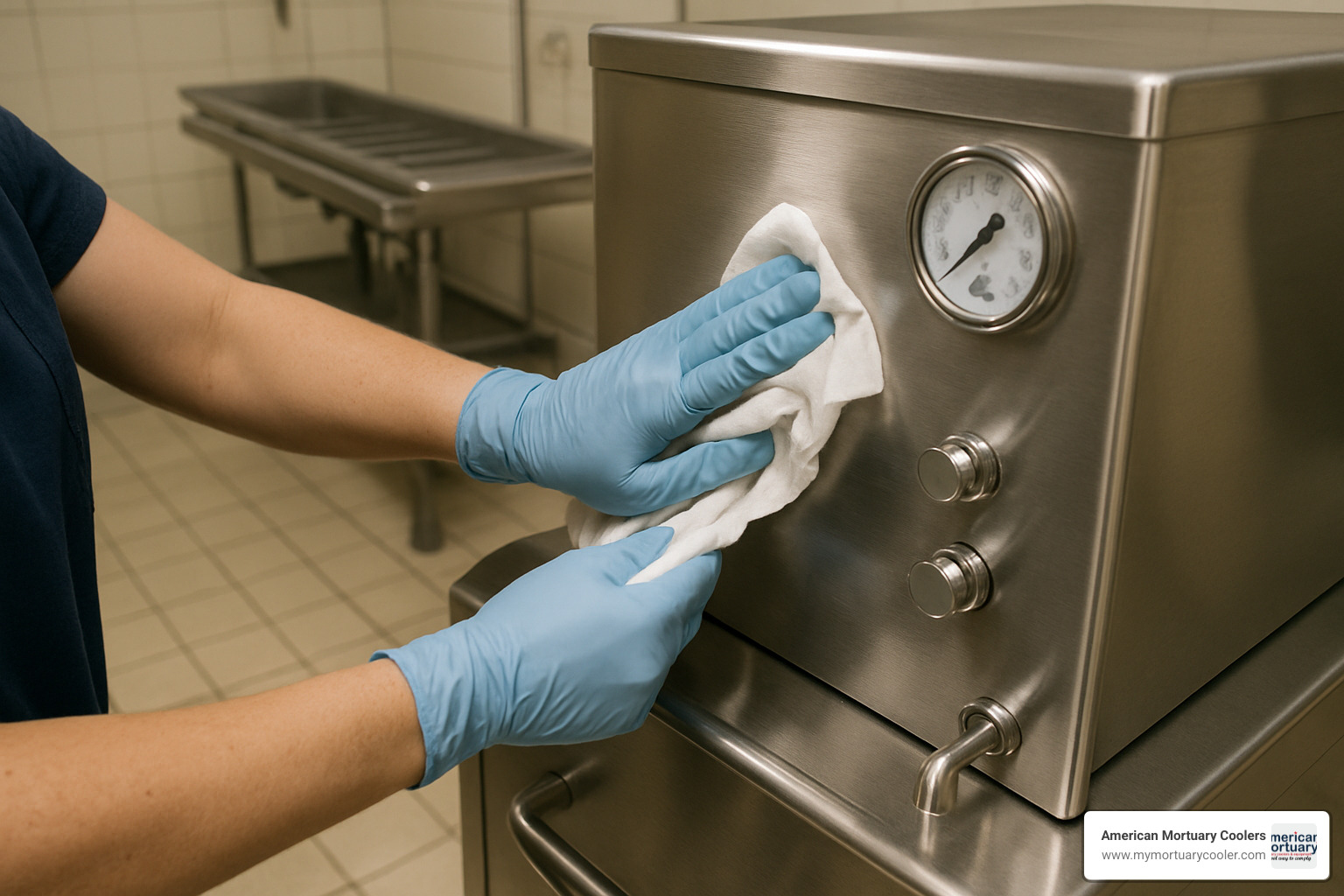
Maintenance requirements are refreshingly minimal, especially in models with the magnetic drive pump. With fewer moving parts to wear out, many Duotronic owners report years – sometimes decades – of trouble-free operation with just basic care. All new units come with a one-year guarantee, though most owners will tell you they expect (and get) much longer service.
Safety features aren't flashy, but they're there when you need them. The automatic bypass system prevents pressure from building to dangerous levels, protecting both the machine and the deceased. The Duotronic V takes this further with an automatic shut-off feature that provides peace of mind during those moments when you need to step away.
Between cases, the cleaning process couldn't be simpler. The stainless steel exterior wipes down easily with standard disinfectants, while the removable tank can be thoroughly cleaned and sanitized. In a busy prep room where time is always at a premium, this practical design feature saves precious minutes.
As a Chicago embalmer with 25+ years of experience put it: "The Duotronic is built like a tank. I've used the same machine for over 15 years, and aside from routine maintenance, it's never given me any trouble. In this business, that kind of reliability is invaluable."
At American Mortuary Coolers, we understand the importance of equipment you can count on. That's why we're proud to offer the duotronic embalming machine alongside our custom mortuary coolers – because preparation room excellence starts with tools that won't let you down.
Using & Maintaining Your Duotronic Embalming Machine
Getting the most from your duotronic embalming machine isn't complicated, but a little know-how goes a long way. I've helped hundreds of funeral professionals set up and maintain these workhorses, and I'm happy to share what I've learned along the way.
Setting up your Duotronic should become second nature with practice. Start by placing it on a solid, level surface—wobbly tables are no friend to precision equipment! Make sure you're plugging into a properly grounded outlet that matches your machine's voltage needs (typically 110V/60Hz). When filling that Pyrex tank with embalming fluid, resist the urge to top it off completely—keep it below the maximum fill line to prevent overflow when the machine is running.
Before starting any case, take a moment to connect your arterial tube securely. Nothing disrupts your workflow quite like a loose connection mid-procedure! Prime the pump by running the machine briefly to push any air bubbles out of the lines—those bubbles can cause inconsistent pressure that affects your results.
"I always tell new embalmers to treat their Duotronic like a good car," says Jim Callahan, a 30-year funeral service veteran from Memphis. "Give it the attention it deserves after each use, and it'll serve you faithfully for decades."
After each day's work, make cleaning a non-negotiable ritual. Empty and thoroughly rinse that tank, run clean water through the system to flush out chemical residues, and wipe down the exterior with an appropriate disinfectant. While you're at it, give the tubing a quick once-over for any signs of wear or damage—catching these early can prevent messy situations later.
More info about buying embalming equipment
Installation & Daily Operation Best Practices
Your duotronic embalming machine deserves a proper home in your prep room. When installing, consider both practical functionality and longevity. The machine works best on a dedicated electrical circuit if possible—this prevents power fluctuations that can affect performance. Position it at a comfortable working height to save your back during those long days, and ensure there's good airflow around the unit to prevent overheating.
When it comes to operation, think of pressure settings as a conversation with the deceased rather than a one-size-fits-all approach. Start gentle with lower pressure (5-10 psi) and listen to what the body tells you, increasing gradually only as needed. Most routine cases respond beautifully to 15-20 psi, though special circumstances may require adjustments.
The pulsation feature is like having an ace up your sleeve. When you encounter resistance or are working with particularly delicate tissues, switching to pulsation can work wonders. The gentle rhythm helps clear blockages naturally without cranking up the overall pressure—much like how our own hearts move blood through our systems.
"I learned the hard way about the importance of watching fluid levels," shares Sarah Thompkins from our Nashville location. "During a particularly complex case, I got distracted and let the tank run nearly dry. The unusual sound the pump made still haunts me! Now I keep a constant eye on fluid levels during operation."
Don't forget the basics of personal protection—gloves, eye protection, and fluid-resistant clothing should be your uniform when operating your Duotronic. And always secure those tubes properly to prevent kinks or disconnections that can interrupt your workflow.
Routine Maintenance for the Duotronic Embalming Machine
The remarkable longevity of the duotronic embalming machine doesn't happen by accident—it's the result of thoughtful care. Think of maintenance as an investment that pays dividends in reliability and performance.
After each use, make cleaning the tank screen a priority. This small mesh at the bottom of the tank prevents debris from entering the pump system, and keeping it clear is perhaps the single most important maintenance task you can perform. It takes just seconds but can prevent hours of downtime and costly repairs.
Weekly checks should become part of your rhythm. Take a moment to inspect all gaskets and O-rings for signs of wear—these humble rubber components are critical to maintaining proper pressure. While you're at it, give any loose connections a gentle tightening and verify your pressure gauge is reading accurately.

Monthly, take time to listen to your machine. A well-maintained Duotronic has a distinctive sound during operation—any unusual noises could indicate developing issues. Check belt tension on older models, and verify that the safety bypass valve is functioning correctly by temporarily creating back pressure in the system.
Once a year, consider scheduling professional service. A certified technician can spot potential issues before they become problems, replace wear items proactively, and ensure calibration is spot-on. At American Mortuary Coolers, we can connect you with technicians who know these machines inside and out.
"In 25 years of working with Duotronics, I've found that the owners who do the small maintenance tasks consistently are the ones whose machines last longest," notes veteran service technician Bob Mercer. "It's not complicated—just consistent attention to detail."
Replacement parts for even vintage Duotronic models remain readily available. Many embalmers actually prefer to repair their trusted machines rather than replace them—a testament to the deep connection professionals develop with equipment they can rely on day after day.
How the Duotronic Embalming Machine Stands Out
When you're comparing embalming equipment options, the duotronic embalming machine truly stands in a class of its own. Priced between $4,959 and $5,400, it offers exceptional value compared to alternatives like the Frigid Embalming Machine (typically around $5,450) while delivering comparable or superior features.
What really makes the Duotronic special isn't just the price point—it's the extraordinary longevity these machines provide. In an era where most equipment seems designed to fail after a few years, the Duotronic breaks the mold. It's not uncommon to find original 1967 models still humming away in preparation rooms across the country, more than half a century after they were built. That kind of staying power simply doesn't exist with most modern equipment.
"I've worked with various embalming machines throughout my career," shares a funeral director from our Pittsburgh location, "but I always come back to the Duotronic. Its reliability and consistent performance, especially in difficult cases, make it worth every penny."
Among funeral professionals, the Duotronic has earned the affectionate nickname "the Cadillac of embalming machines"—a testament to its reputation for quality and performance. Many embalmers develop such an attachment to their trusty Duotronic that they'll go to great lengths to repair rather than replace it, even after decades of service.
Duotronic: Performance, Value, and Reliability
The duotronic embalming machine delivers on three crucial fronts that matter most to busy funeral professionals: performance, value, and reliability.
From a performance standpoint, the pressure control capabilities vary by model—from the gentle 0-15 psi range of the Duotronic III to the powerful 0-100 psi range of the Duotronic V. This flexibility means you can handle everything from the most delicate infant cases to challenging situations requiring maximum pressure. The chemical compatibility is another standout feature—while some competing machines deteriorate when exposed to harsh embalming chemicals, the Duotronic handles even aggressive phenols and high-index cavity fluids with ease.
The pulsation technology available on the Duotronic II and V models is a game-changer for difficult cases. This feature mimics the natural heartbeat, helping to clear blockages and distribute embalming fluids more evenly throughout the body. Meanwhile, the crystal-clear Pyrex glass tank gives you perfect visibility of your fluid levels and contents at all times.
When it comes to value, yes—the initial investment of $4,959-$5,400 might be higher than some basic models. But funeral directors who think long-term understand that the Duotronic's durability translates to a much lower cost of ownership over time. The simplified design and quality components mean you'll spend far less on maintenance and repairs over the years. Plus, these machines hold their value remarkably well, with used units often selling for 70-80% of their original price when it comes time to upgrade.
The reliability factors speak volumes: stainless steel construction, Pyrex glass components, and Teflon-coated parts that resist both corrosion and chemical damage. The "just do it right" engineering philosophy that traces back to WWII-era manufacturing continues to influence how these machines are built today. Ask almost any long-term Duotronic user about their experience, and you'll hear the same story—these machines just keep working, year after year, with minimal fuss.
More info about embalming machine comparisons
Costs, Financing & Purchasing Options
Investing in a duotronic embalming machine is a significant decision for any funeral home, but one that typically pays dividends through years of reliable service. Let's break down what you can expect to spend and how to make this investment work for your business.
Current models are priced competitively, with occasional promotions bringing the cost below MSRP:
- Duotronic II: $4,985 (down from MSRP $5,400)
- Duotronic III: $4,959 (down from MSRP $5,400)
- Duotronic V: $4,969 (down from MSRP $5,400)
Here at American Mortuary Coolers, we work with funeral homes across our service areas to ensure you get the best possible pricing without sacrificing quality or service.
We understand that cash flow matters in the funeral business, which is why many of our clients take advantage of financing options. The popular three-payment plan breaks down to approximately $1,700 per payment, making it much easier to manage from a budgeting perspective. We can also work with you to develop custom financing terms based on your specific situation and credit history.

When it comes to purchasing, you have several options. Buying direct from the manufacturer provides full warranty coverage and factory support. Working with authorized dealers like us offers the advantage of local service and potential bundling discounts when purchasing other funeral equipment. For those on a tighter budget, certified refurbished units occasionally become available at about 70-80% of the new price, while the used market can offer older models at deeper discounts (though without warranty coverage).
One of the Duotronic's hidden advantages is the remarkable parts availability. Even for models dating back to the 1960s, replacement parts remain available—something almost unheard of in today's disposable equipment culture. This robust parts ecosystem means your investment remains serviceable for decades.
A funeral director from our Chicago location recently told us: "We financed our Duotronic V through the three-payment plan, which made it much easier to manage from a cash flow perspective. The machine has more than paid for itself through reliable service and minimal maintenance costs."
If you're considering adding a Duotronic to your preparation room, I'd recommend chatting with one of our specialists to determine which model best suits your specific needs and case volume. We'll help you find financing terms that align with your business goals and make this investment as smooth as possible.
Frequently Asked Questions about Duotronic Embalming Machines
What pressure settings are best for different cases?
Choosing the right pressure setting on your duotronic embalming machine is more art than science, and it's something that comes with experience. That said, I've worked with hundreds of funeral professionals who've shared their best practices over the years.
For most standard adult cases, you'll find that 15-20 psi does the job nicely. It's kind of the "Goldilocks zone" – not too high, not too low. When you're dealing with edema cases, though, you'll likely need to bump that up to 20-30 psi to overcome the resistance in those waterlogged tissues.
"I always tell new embalmers to start low and go slow," shares a funeral director from our Nashville location. "You can always increase pressure, but you can't undo damage from starting too high."
For delayed embalming (and we all get those cases), you might need to push toward 25-35 psi, especially if you're dealing with significant tissue changes. On the opposite end, when working with children or infants, dial it way back to 5-10 psi to protect those delicate tissues.
Our elderly cases often need a gentler touch too – around 10-15 psi typically works well for those more fragile vascular systems. And for autopsy cases? Usually somewhere between 15-25 psi, depending on the extent of the autopsy and time since death.
The beauty of the duotronic embalming machine is its precision. If you have a model with the pulsation feature, you can often achieve better results at lower pressures, as that gentle "heartbeat" action helps distribute the fluid more efficiently than brute force.
How long does a Duotronic unit typically last?
If there's one thing I've learned in my years with American Mortuary Coolers, it's that duotronic embalming machines are built like tanks. While most modern equipment seems designed to fail after a few years, these machines are from a different era of manufacturing.
Most Duotronics remain in active service for 20-30 years with proper care. That's not the exception – it's the rule. I regularly visit funeral homes using original Duotronic I models from 1967. Think about that – these machines have been preserving the deceased longer than many funeral directors have been alive!
"My Duotronic III was purchased when I first opened my funeral home in 1985," a funeral director from Columbia told me recently. "It's outlasted three buildings, two marriages, and countless other pieces of equipment. At this point, I think it might outlast me!"
What typically needs replacement isn't the machine itself but consumable parts – gaskets wear out, tubing gets brittle, and occasionally pump components need refreshing. But the heart of the machine? That keeps beating decade after decade.
The secret to this longevity isn't complicated: regular cleaning, proper storage away from extreme temperatures, and following the maintenance schedule. Do those simple things, and your duotronic embalming machine investment gets spread over decades of reliable service.
Where can I find replacement parts?
Finding parts for your duotronic embalming machine isn't nearly as challenging as you might expect for equipment that might be older than some of your staff. Here at American Mortuary Coolers, we regularly help funeral homes across our service regions source exactly what they need.
Wilbert Funeral Services (the current owner of the Duotronic line) maintains an impressive inventory of parts for all models – yes, even those vintage units from the '60s and '70s. They've recognized the value in supporting these long-lasting machines.
We can help you get genuine parts quickly, whether you're in Johnson City, Atlanta, Chicago, Columbia, Dallas, Los Angeles, New York, Pittsburgh, or anywhere in between. Our network spans the Midwest, Northeast, Rocky Mountain, Southeast, Southwest, and Pacific regions – meaning help is never far away.
The most commonly needed parts are pretty straightforward: tubing that's become brittle, tank screens that have accumulated residue, gaskets and O-rings that have dried out, pressure gauges that need calibration, control switches that have worn out, or pump components that need refreshing.
"I panicked when my 30-year-old Duotronic started leaking from a gasket," a funeral director from Chicago told me. "I thought I'd never find the part. One call to American Mortuary Coolers and I had a replacement in two days. The machine was back in service before my next case."
We've also built relationships with qualified service technicians across the country who know these machines inside and out. Many of them trained directly with the original manufacturers and have decades of experience keeping Duotronics running smoothly.
More info about our mortuary cooler solutions
Conclusion
The duotronic embalming machine has truly earned its reputation as the "Cadillac of embalming machines" through more than five decades of reliable service to the funeral profession. From its groundbreaking introduction in 1967 to today's advanced Duotronic V model, this remarkable piece of equipment continues to deliver exactly what embalmers need most: precision, consistency, and extraordinary durability.
Here at American Mortuary Coolers, we've seen how quality preparation room equipment makes all the difference in funeral operations. While our primary expertise lies in custom mortuary refrigeration solutions, we understand that the entire preparation process requires dependable tools from start to finish. That's why we're committed to helping funeral professionals across our service regions find and maintain the right embalming equipment to complement their mortuary coolers.
What makes the Duotronic special isn't just its mechanical performance – it's the philosophy behind it. In an age where planned obsolescence has become the norm, the Duotronic represents something increasingly rare: equipment built to last decades, not just years. This commitment to quality mirrors the dignity and care that funeral professionals provide to families during their most difficult moments.
"I inherited my Duotronic from my father, who purchased it when I was still in high school," shares one third-generation funeral director from our Tennessee service area. "Thirty years later, it still performs flawlessly with just basic maintenance. You simply can't find that kind of longevity in modern equipment."
For funeral homes weighing their equipment options, the Duotronic offers compelling value despite its slightly higher initial investment. Its ability to handle everything from routine cases to the most challenging situations, combined with its legendary lifespan, makes it a wise long-term choice for preparation rooms of all sizes.
Whether you're operating a multi-location funeral business in Chicago or a single family-owned establishment in rural Georgia, our team at American Mortuary Coolers is ready to help you create a complete preparation room solution. We understand that quality equipment isn't just about functionality – it's about giving you the confidence that comes from working with tools you can truly rely on, day after day and year after year.
We invite you to reach out to discuss how we can help you maintain the highest standards in your practice through thoughtfully designed equipment solutions that stand the test of time – just like the remarkable duotronic embalming machine.


